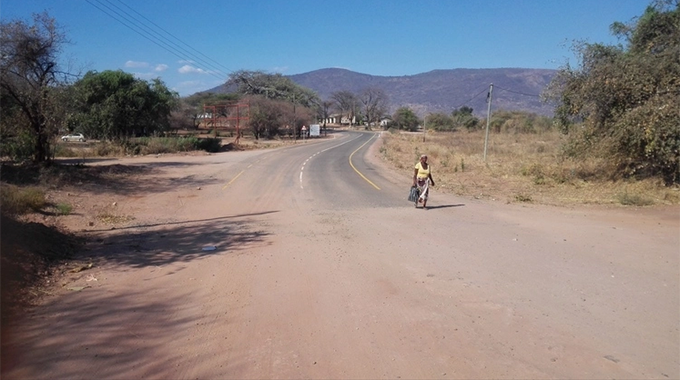Kanyemba: From slave trade transit point to modernity

Isdore Guvamombe recently in KANYEMBA, Mbire
Kanyemba, Zimbabwe’s newest town under construction, is going to be an interesting place of history, commerce, industry and trade. It is going to be a major crossing point to the north of Zimbabwe.
Situated 350 kilometres north of Harare on the banks of Zambezi River, where the mighty river lathers on its final leg to the Indian Ocean after snaking almost 3 000km from its source in the Barotse Plains, past Victoria Falls, Kariba and Mana Pools, Kanyemba will have something for everyone.
At night it is chilly, but high sounds of predators and their prey, snort you to sleep as the theatre of the jungle rolls on.
Here, you need to have built your shelter up the tree or on some fortified platform, for you easily become part of the prey or supper of the lion or hyena.
Even permanent structures have to be heavily fortified.
Here, it is common to wake up and find a whole family eaten by lions. Four years ago, this happened.
Here, again, in the waters, it is common to see hippos flop together, male rivalry heating up in bloody territorial fights and the vanquished male forced to lurk hapless on the open plain until it gathers sufficient confidence to mount another challenge.
The sounds tell a story of another life.
Bachelor hippos are often found grazing on land near the river. Kanyemba is known to hold 450 000 tonnes of uranium deposits, according to the Zimbabwe Consolidated Diamond Company (ZCDC) in a joint survey it carried with China National Nuclear Corporation (CNNC) Overseas Uranium Holding a few years ago.
Belarus has acquired 10 000 hectares of land for agricultural production.
It is here in Kanyemba, where long ago, slave traders kept strong men and women they had either captured or bought, chained to the ground in a stone walled enclosure, awaiting transportation to the world yonder via the Indian Ocean.
The main structure of the slave holding cells still remains, albeit in a dilapidated state in front of the new immigration office at Kanyemba.
That the holding cells were strategically located on the Zimbabwean side, directly opposite the confluence of the Zambezi and Luangwa rivers to provide the boats deep water, cannot be questioned.
Again, this is a reminder that this part of the world contributed to slave trade.
National Museums and Monuments of Zimbabwe has started working on the ruins, together with several other stone structures dotted around Kanyemba.
On the foot of another hill, to the west of the site of the new Kanyemba town, at the confluence on Mwanzamutanda and Zambezi rivers, lies a swathe of land, the Kanyemba Salt Pan.
Here, women in post mendicancy, traditionally prepared salt from lush green grass.
The process is complex and a highly guarded secret of the Doma and Chikunda elders. Elderly women still do it until today, but it has not been commercialised.
Ever since the end of the slave trade and the death of Nyatsimba Mutota, (Munhumutapa) about 150 kilometres before reaching the salt coop he wanted to conquer, Kanyemba has not developed meaningfully, until the recent move to turn it into a town.
Kanyemba has always been a crossing point since the Portuguese trade and slave trade. It has been a major link between Zimbabwe, Zambia and Mozambique.
Commercial hunting for wildlife has been the domain of Kanyemba for the past three decades and the current school, clinic and other infrastructure were built with proceeds from the Communal Areas Management Programme for Indigenous Resources (Campfire).
Mupedzapasi, Usanga Usanga and Masau camps have hosted some of the world’s acclaimed wildlife trophy hunters, especially those from Texas in the United States.
Mr Phineas Mushoriwa, who was appointed as a consultant for the transition of Kanyemba into a town by Mbire Rural District Council, says there has been more progress over the past year.
“Having grown up here, I am sure you have seen how your place has changed, especially in the past two years,” he said. “The construction of the new town is on course. Many companies have moved here. You saw how the Government has fast-tracked the tarring of the road from Mahuwe to Kanyemba.
“We have brought National Museums and Monuments here and they are doing everything to document historical sights. The Infrastructure Development Bank of Zimbabwe is now on the ground having acquired a huge property.’’
When the town finally roars to life, there are a lot of support activities and infrastructure to attract investment.










Comments